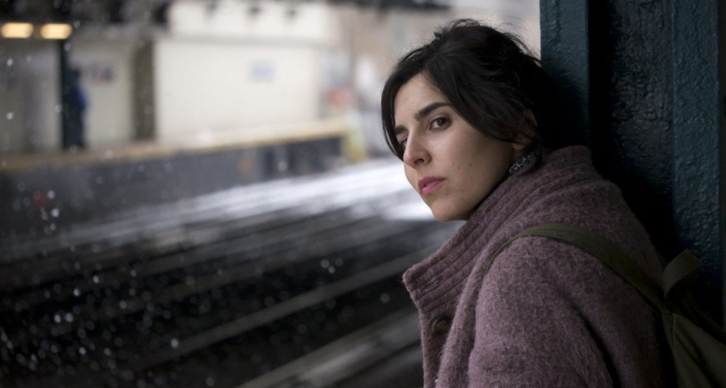HERMIA & HELENA opens in a New York that might, until the clues cohere, be Buenos Aires. Flowers that could be in any garden, fulgent with color. The echo of drumming on the avenues. A city park – where? The impression depends, to be sure, on a sense of both cities. The Argentine director Matías Piñeiro has lived and worked in both, and he has, in this film, written a poem in which the cities nearly mate. The overhanging trees of Buenos Aires entangle the bridges of New York; a woman goes down the steps to the subway and exits from the Subte. Planes crisscross in the sky. Doors open and close. Past, present, and two languages intersect. Perhaps the names in the title personify each metropolis, along with the persons of the film, and those of the play, A Midsummer Night’s Dream, from which they are taken.
This is Piñeiro’s fourth film on a Shakespearean theme in which, rather than doing a version of the play, he embeds it in the situation and lets the allusions happen as they will, or not. Agustina Muñoz plays Camila, a porteña theater maker who comes to New York on a fellowship to work on a new translation of Midsummer Night’s Dream. She is surprised to receive the honor so soon after her friend Carmen (María Villar) has returned to Buenos Aires from completing hers. There is, once she arrives, an amusing absence of scholarly apparatus; no pouring over Elizabethan concordances; no study of existing translations; just the Folger edition dismantled page-by-page and taped into a blank notebook to be annotated and translated.
The “institute” is run by Lukas (Keith Poulson), a nice-looking young man whose name, judging by his cellphone tag, it bears, and its fellowships consist of letting French and Argentine women stay in its (his?) apartment while they work on their projects. He’s not necessarily there, but that, when it dawns on us, is what it amounts to. He behaves with rectitude, but, well, things happen. When we first see him, we assume he is the boyfriend of the woman he is talking to on his cell, Carmen, who spots him in the park on the way to the apartment. The residency doesn’t require the projects to be finished, but a creative gift, suitable for hanging, must be left for display.
Camila’s Midsummer project is undertaken in the northern winter, with snow on the ground and the filigree of leafless trees, those ruined choirs. Midsummer infiltrates Camila’s life in the New York cold. Magic when it happens is a dance of chance with the imagination. Confluence is causality and happenstance a miracle. Puck makes Titania fall in love with a donkey with a droplet in the eye. But persons in love do fall abruptly for other people, with no need for a potion drawn from a flower. The ring of a cellphone will do as well as Puck, Camila discovers, drowsing on the shoulder of a present love. The translated words that describe the potion are writ in daydream before she is awakened. The overlay of text and image, which happens more than once while Camila sleeps, is done with grace and subtlety, the dream made tangible, a tracery of thought.
The reverie of allusion is not limited to Midsummer. One thinks of other comedies and the romances, from Twelfth Night to Pericles. The mysteries of parentage are touched on, and how the ways that those who bore you loved each other, and others, led to you. Persons lost and reconnected, and lost again, or never found, whether lovers, friends, or a sibling, sink and re-emerge. Postcards start arriving at Camila’s address from someone named Danièle, who is working her way across country to reunite with Carmen, who is long gone to Buenos Aires. It turns out that there is a satellite residency in Montana into which recipients of the fellowship can opt for an extra month; and Danièle (Mati Diop), an ex-fellow, may have been one of those who took it. Her postcards, pasted to a map of the United States, will become Camila’s gift to the institute.
Piñeiro and his wonderful actors (you want to know and embrace them) are making an oeuvre unique in Shakespearean filmmaking. He neither films the plays themselves nor makes versions that drop the language and transpose the plot. He doesn’t insert scenes to color a separate story nor mirror Shakespeare with actions oblivious to the reflection. He makes art of the fact that Shakespeare exists in the world, that no experience is without analog, that those who know Shakespeare connect him to their lives. He did this this first with Rosalinda (a short), then Viola and The Princess of France, now HERMIA & HELENA. If there’s a parallel to Piñeiro’s films, it is Éric Rohmer’s Conte d’hiver (Tale of Winter or A Winter’s Tale), in which the play resonates in a situation in which it makes a chance appearance. This is Piñeiro’s most poetic work yet in the sequence, but it does not feel like the last. I hope for a fifth and, yes, a sixth, and more than that.
Check listings for viewing options.
